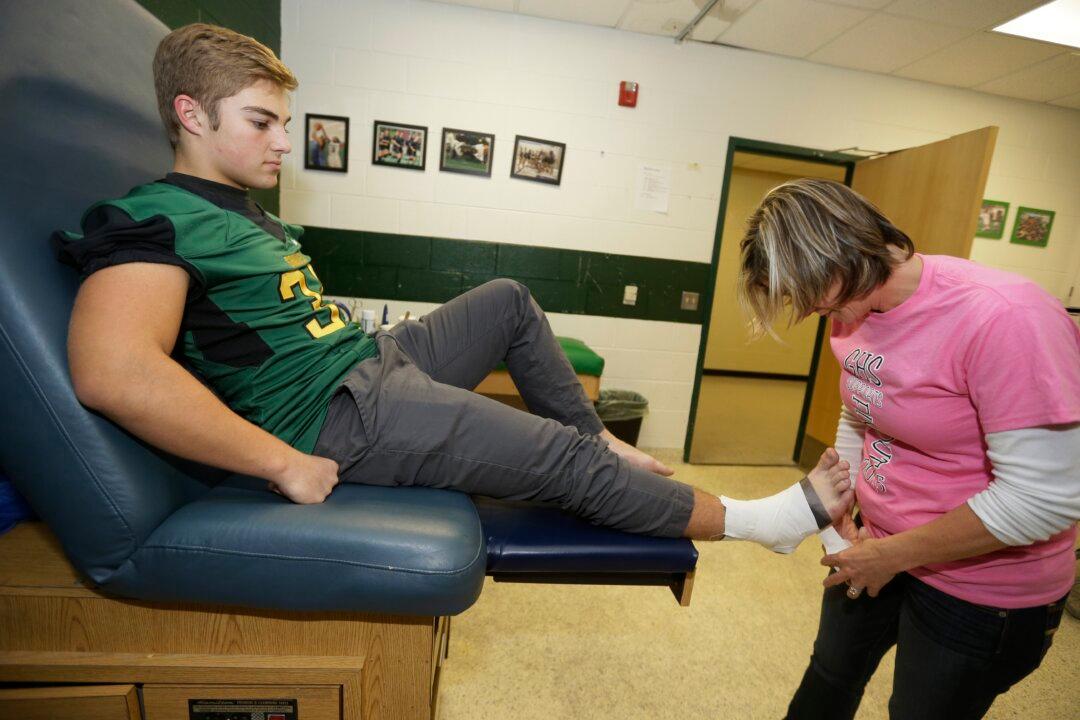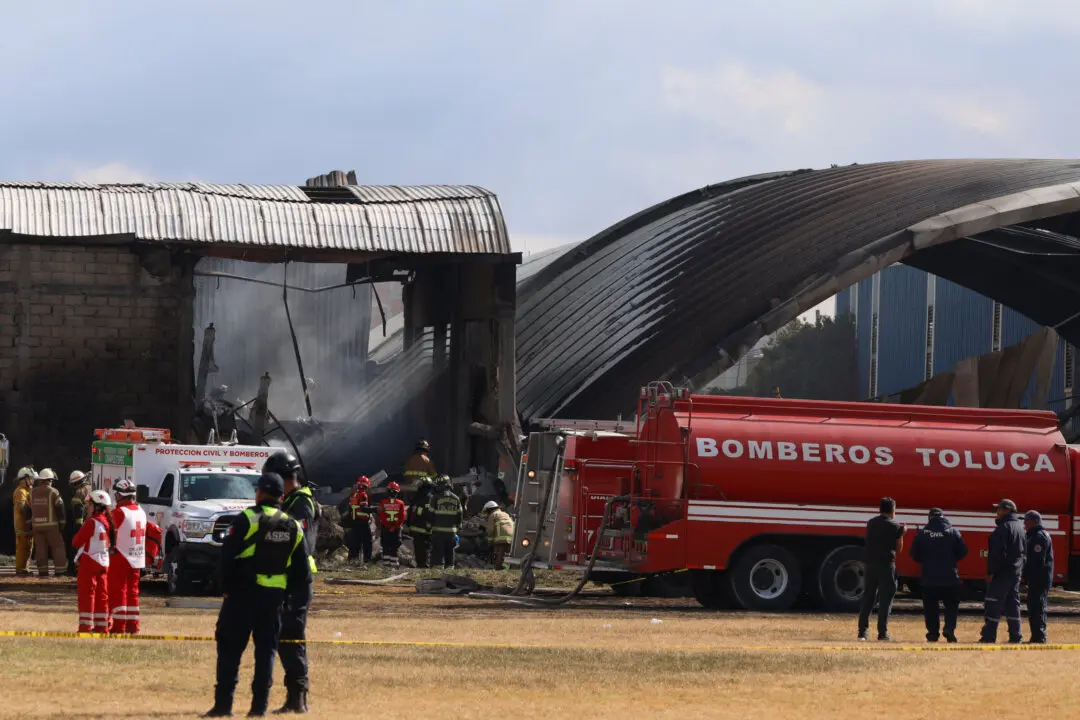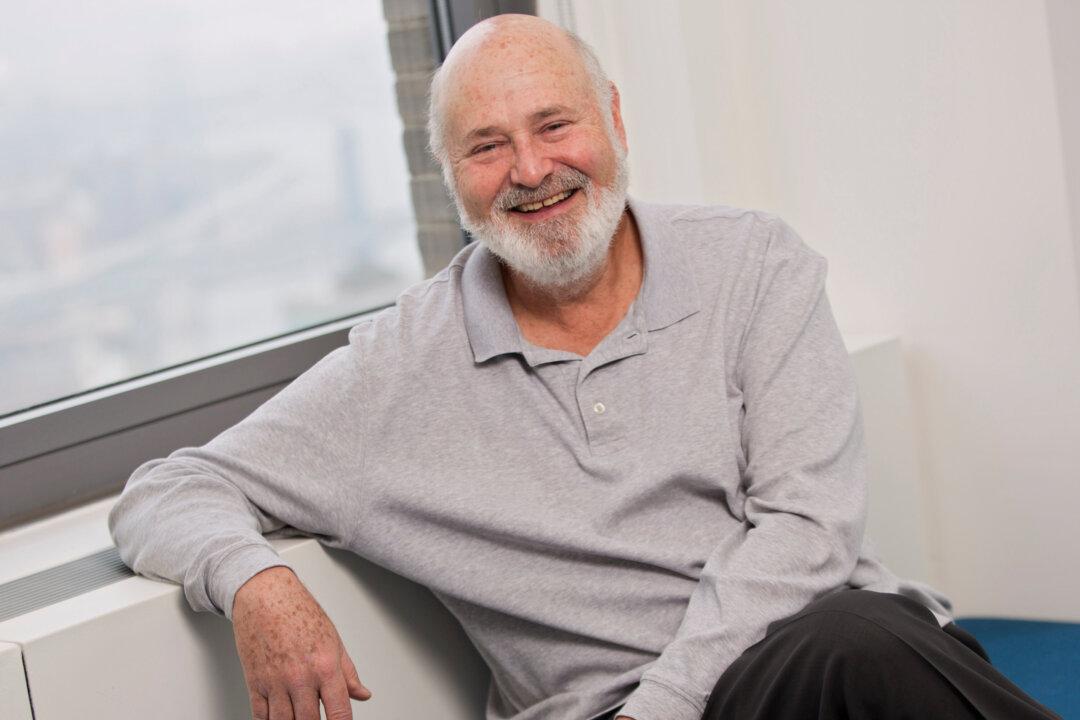BEVERLY HILLS, Mich.—Details of the block that knocked Ian Rice to the turf are fuzzy for him now. He remembers falling over. He remembers he couldn’t walk. That was the first sign something was seriously wrong.
His father, watching his son and his Birmingham Groves High School football team from the stands, remembers a little more.
“You’re taught to bounce up and get going, but he didn’t bounce and as soon as a guy doesn’t get up like you’re used to, my heart skipped,” Michael Rice said.
Rice suffered a concussion that sent him to the emergency room last fall, and he sat out the next two games in what turned out to be a 7–4 season. As a defensive captain for a team that was a preseason favorite to win its conference, Rice had every reason to want to return for his senior year.
The 5-foot-10, 185-pound middle linebacker—and his parents—also had cause to worry because of the concussion.
His story is one that plays out for thousands of athletes on thousands of high school sports teams across the country. What’s different is that Birmingham Groves is one of 62 Michigan high schools participating in a unique pilot program that does baseline testing of athletes in football and other sports to help with concussion diagnosis.
Baseline testing—a combination of memory, reaction time, attention, and stress assessments—is done in major pro sports because it is considered an objective and individualized tool to help decide whether to remove an athlete from a game. The NCAA recommends baseline testing of all college athletes. While all states have laws that address preventing concussions in youth sports, many are weak and none require baseline testing.
Schools typically don’t argue with the benefit of testing, but cash-strapped districts often say the cost of offering such programs is prohibitive. Michigan found the seed money to make it happen this year, taking $10,000 primarily from playoff gate profits.
“The schools that are engaged in the pilot program are learning more about sideline detection and making smarter removal-from-play decisions, ” said Jack Roberts, Michigan High School Athletic Association executive director. “We know they are removing players at a higher rate than schools who are not involved in our pilot programs.”
Undetected Injuries
Health and safety advocates fear concussions often go undetected in high schools because of inconsistent protocols at districts unwilling or unable to spend money for detection. It’s often on players to self-report concussions, or on coaches, who have many responsibilities and sometimes little training, to recognize symptoms.
The National Federation of State High School Associations says the only state association doing anything similar to Michigan is Mississippi, though that program covers far fewer schools and only football.
Many sideline concussion-testing programs are on the market at different price points. Michigan is testing the Illinois-based King-Devick Test affiliated with the Mayo Clinic and Maryland-based XLNTbrain Sport. The association provides them for free to the schools this year and next. Long term, Roberts thinks the association could fund it in part with a $3 to $5 fee per student.
The association expects to spend $20,000 next year to continue the program, Roberts said. He would like to see legislators assist, especially for poorer school districts, but the association is also working to get grants.





